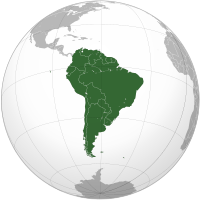
Photo from wikipedia
The reducing capacity (RC) of natural organic matter plays an important role in the carbon cycle and biogeochemical fates of environmental contaminants in the aquatic system. However, the electron donation… Click to show full abstract
The reducing capacity (RC) of natural organic matter plays an important role in the carbon cycle and biogeochemical fates of environmental contaminants in the aquatic system. However, the electron donation potentials of dissolved organic matter (DOM) from high-latitude lakes are still uncertain. In this study, we collected DOM samples from high-latitude lakes across the Arctic and boreal regions in Sweden and Norway to investigate the effects of the DOM concentration and characteristics on its ambient reducing capacity (ARC). Mercury (Hg(II)) abiotic reduction in darkness was used to determine the ARC. The results showed that the DOM in Arctic lakes is less terrestrial-dominant than in reference sites (i.e., forest lakes). Between the two categories of Arctic lakes, tundra lakes are more terrestrial-influenced compared to mountain lakes. Additionally, terrestrial-originated DOM is a main controlling factor for enhancing the ambient reducing capacity, whereas the DOM concentration, i.e., dissolved organic carbon (DOC), resulted in variations in the Hg/DOC ratios that also cause the variations of the observed ARC values. Thus, comparisons of the ARC values can be conducted while oxidant/DOC ratios are kept the same and reported through the method using heavy metals as a chemical probe. After correction for Hg/DOC ratio interference, the ambient reducing capacity of DOM followed the order: boreal forest lakes > Arctic tundra lakes > Arctic mountain lakes. This study highlights that the DOM concentration should also be considered when estimating the ARC as compared to the previous that mainly focusing on the properties of DOM such as its origins. As climate change is projected to be severe in high latitudes, this study demonstrates a significant connection between aquatic DOM geochemical reactivity and terrestrial inputs, which is crucial for a better prediction of the role of DOM in high-latitude lakes in the context of climate change.
Journal Title: Water research
Year Published: 2019
Link to full text (if available)
Share on Social Media: Sign Up to like & get
recommendations!